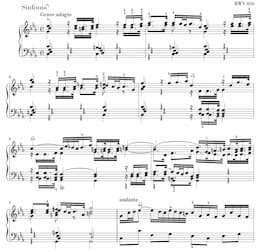The musicians of the Philadelphia Orchestra rattled the rafters of the Kimmel Center on February 9th as an exciting guest conductor enticed them through the twists and turns of Shostakovich’s Fourth Symphony, one of the symphonic powerhouses of the 20th century. Leading the Philadelphians was Tugan Sokhiev, a conductor whose reputation seems to be growing by the month. He made headlines for resigning as director of both the Bolshoi and L’Orchestre National du Capitole de Toulouse rather than be forced to take sides in the Russian-Ukrainian war. Sokhiev’s courage was mirrored in a dazzling performance of Shostakovich’s monumental work, hailed by music lovers at its completion in 1936, but withdrawn and then “lost” during the bloody years of Stalinism. First performed in 1961 (in Moscow), the hour-long Fourth makes extraordinary demands on musicians and audience alike, but there was no question that it was well worth our investment of time and attention in this performance.
Shostakovich: Symphony No. 4 / Tugan Sokhiev · Berliner Philharmoniker
An artist of palpable brilliance, Sokhiev unwrapped Shostakovich’s radical exposition with the enthusiasm and vision of a gifted storyteller. I don’t recall seeing a conductor use every finger—indeed, every joint—with such precise meaning, suggesting music that should flow out, rattle, tumble, and point ominously like a statue of a Greek savant. Without indulging in mere showmanship, the conductor purposefully cradled and flailed his arms, his hands whirled and darted, not one motion extraneous, alert interest and encouragement radiating from his face. Like the regular conductor of this orchestra, Yannick Nézet-Séguin, Sokhiev is not afraid to use his entire body to maintain the complex rhythmic patterns as well as the pulsing ostinatos of Shostakovich’s symphonic journey. The Philadelphia Orchestra, with a few additional troops to reach the composer’s call for 125 musicians, demonstrated their storied virtuosity and ability to bring a unified consciousness to a work of staggering complexity. The musicians gave us a new take on Shostakovich, each note, each chord polished to perfection, searing in its pathway like an arrow to the target’s heart. If I were to characterize the strengths of this production in a few words, it would be brilliant clarity and a sense of cohesive purpose.
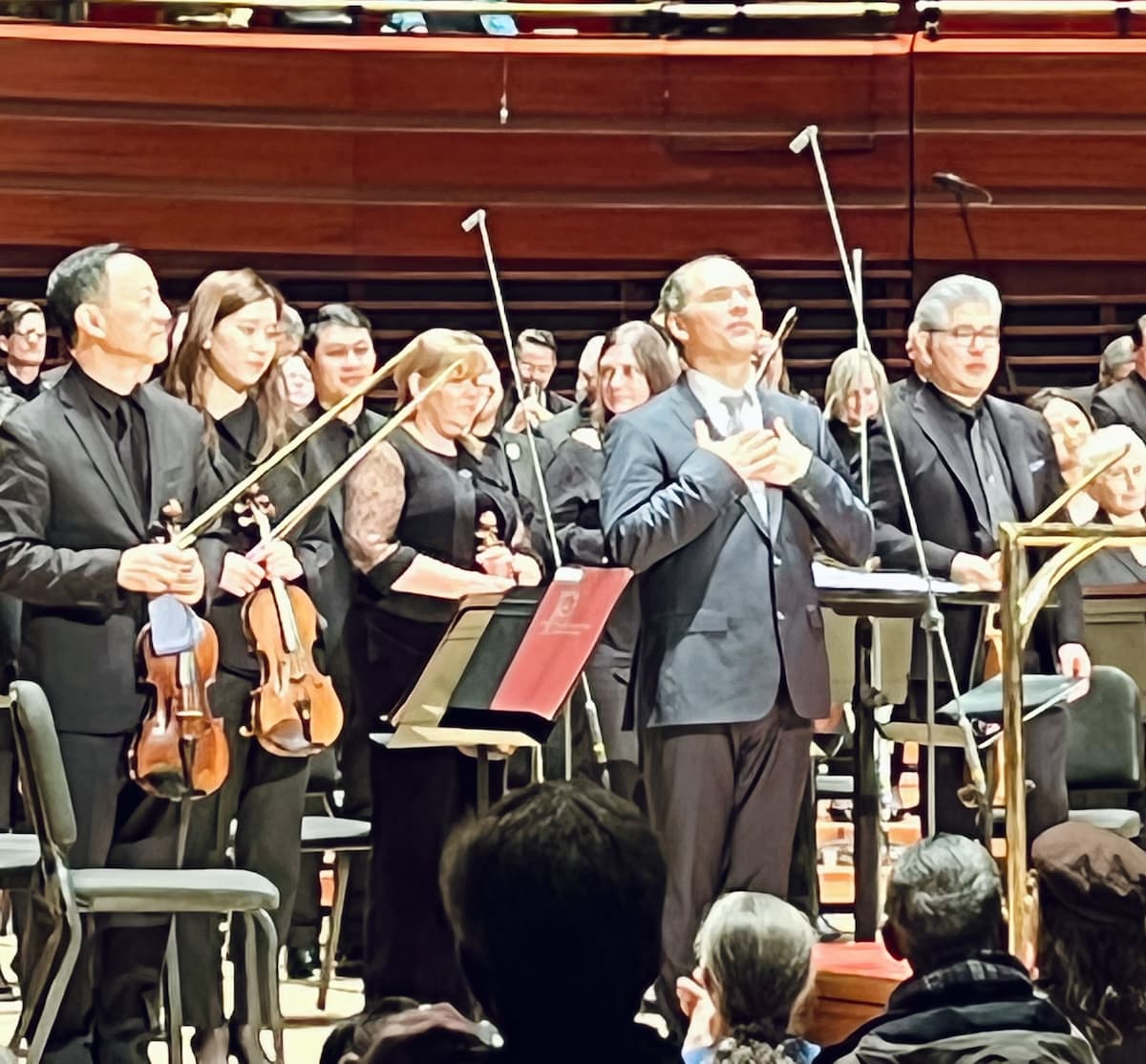
Tugan Sokhiev with Philadelphia Orchestra © Diana Antal
The first movement, approximately a half hour in length, delivered the composer’s contrasting themes represented in a march and a waltz, with abundant variations and a fugue of breathtaking proportions. And what a collection of instruments and their scope. More than twice the woodwinds one usually hears at a classical concert, and such delights as twin tubas and the wonky clunk of wood blocks, the chatter of castanets. The volume range was fascinating, frequently high decibel, but as often gossamer fine, with smooth transitions in between. After a comparatively brief second movement scherzo, the work sustained its energy for another half hour through bird calls, the ticking of a clock (or perhaps a heart), full orchestra crescendi, and the gradual descent into the mystical marriage of harps and celesta as the work nears its whispered end. Most striking of all: the prolonged absolute silence—not a cough in the house—as the last notes faded into oblivion. Here, a sincere thank you to the audience for understanding and respecting the essential role that silence and awe can play in the performance of such a masterpiece.
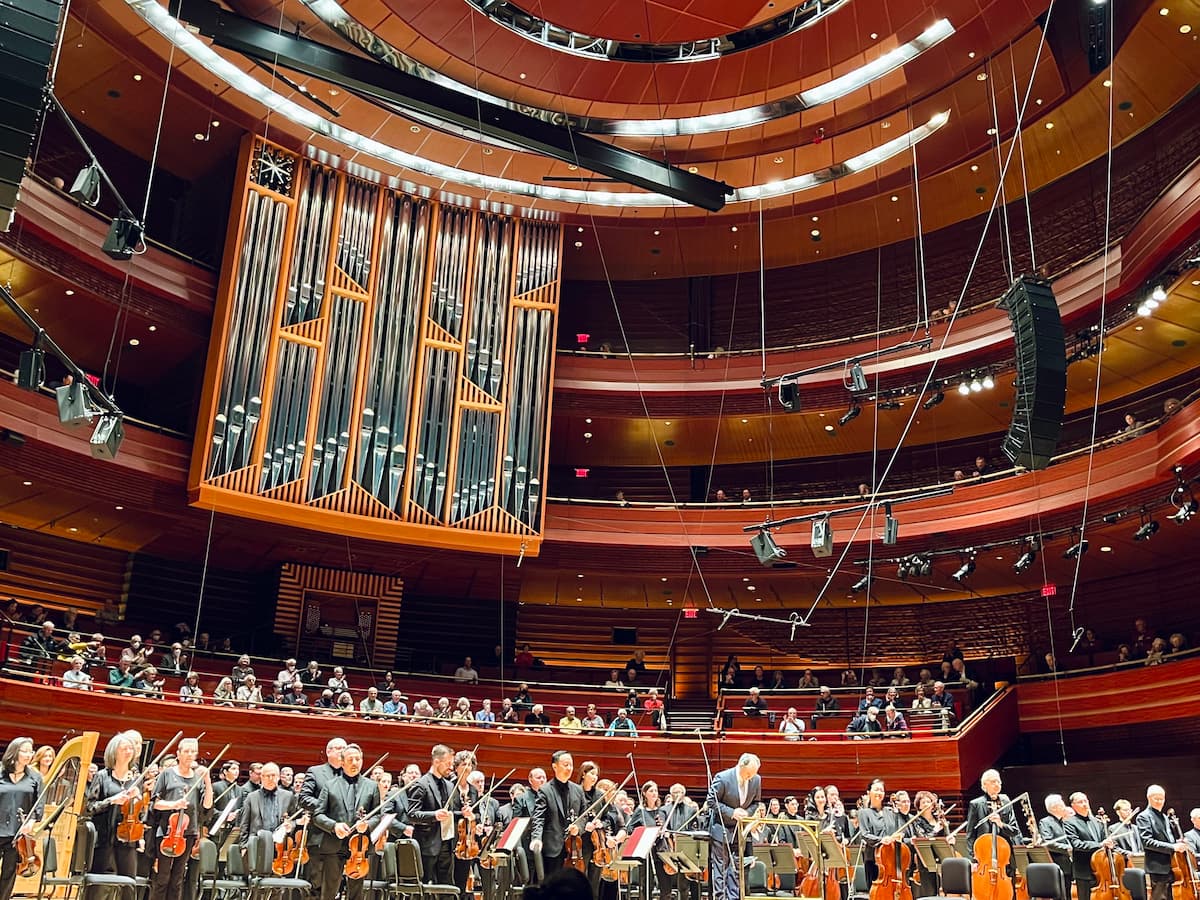
© Diana Antal
Earlier in the concert, the program included a brass octet composed of two choirs of the Philadelphia Orchestra’s stunning brass section augmented by several guest performers in Giovanni Gabrieli’s Canzon septime toni, no. 2, from Sacrae symphoniae. Four brass players gathered high on stage left, while the other four players occupied an aerie at stage right, emulating the way Renaissance brass players created an antiphonal effect when performing on balconies overlooking Venetian canals. Performing artists were (Choir 1) Stephen Franklin and Tony Prisk, trumpets; Nitzan Haroz and Blair Bollinger, trombones; (Choir 2) Jeff Curnow and Nate Hepler, trumpets; Matt Vaughn and Theo Swanson, trombones.
Just before intermission, Sokhiev’s magic transformed Britten’s Simple Symphony, based on tunes the composer penned as a child, from a tepid program filler to a thoughtful meditation by the Philadelphia string section led by concertmaster David Kim. The third movement, “Sentimental Saraband,” stood out with its sweeping romanticism.
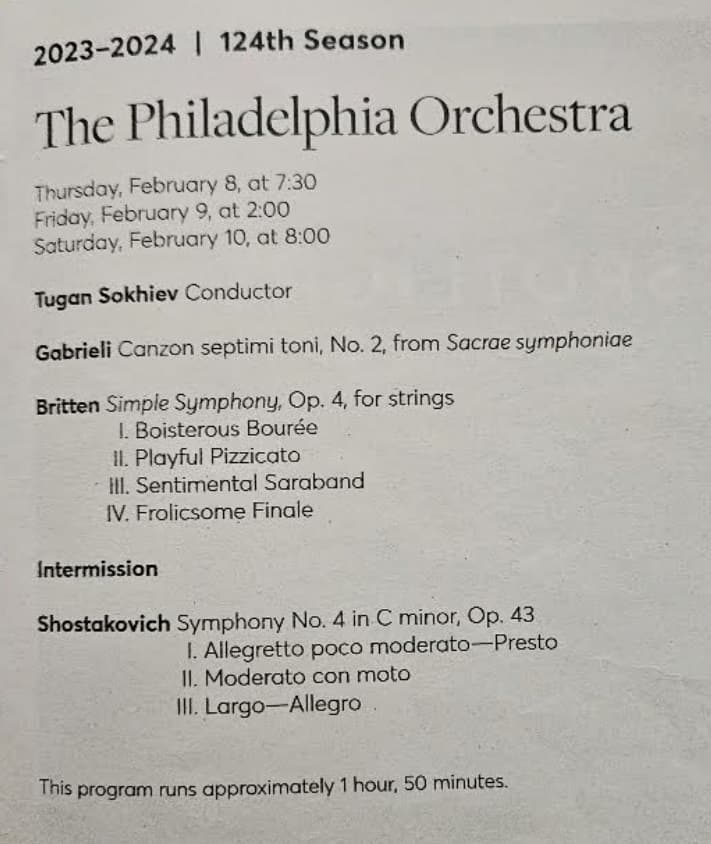
© Diana Antal
Sokhiev will continue to tour in the United States this year and will conduct the Berlin Philharmonic in Bruckner’s Seventh Symphony at the Baden-Baden Festival in March.
For more of the best in classical music, sign up for our E-Newsletter
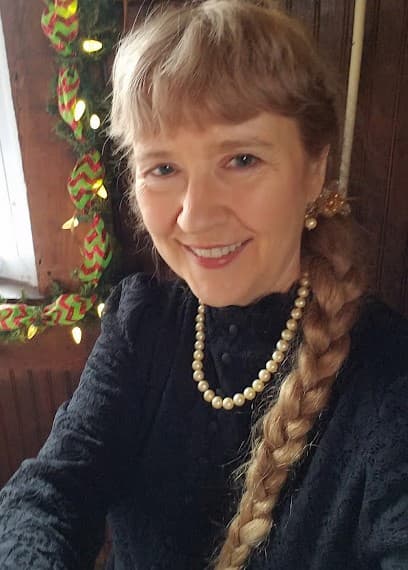
Linda Holt
Linda Holt reviews performances and interviews performing artists for classical music publications including Bachtrack.com, ConcertoNet.com, Fanfare Magazine, and BroadStreetReview.com. Writing as L.L. Holt, she has published two novels about Beethoven’s challenging childhood (Invictus and The Black Spaniard). She studied music history, theory, and criticism at Rider University and has performed with the Greater South Jersey Chorus and as a classical guitarist.

